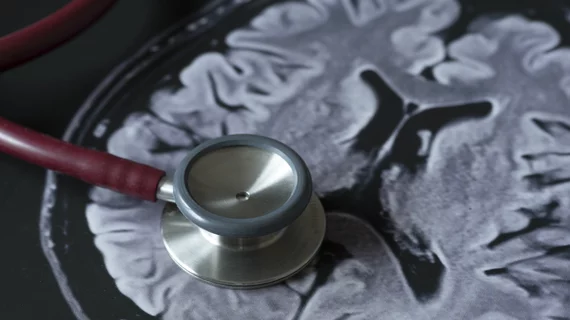Obesity is linked to smaller subcortical gray matter brain volumes, which may play a role in accelerating cognitive decline and dementia, according to a new study published in Radiology.
“The global obesity pandemic has not only led to a greater incidence of cardiovascular disease and type 2 diabetes, but has also coincided with a rise in brain diseases, such as accelerated cognitive decline and dementia,” wrote first author Ilona A. Dekkers, MD, MSc, Erasmus University Medical Center, Rotterdam, the Netherlands, and colleagues.
Past imaging studies have connected body mass index (BMI) to lower gray matter volume and white matter integrity, the authors added, but relying solely on BMI—as most prior studies have—can result in misclassification and bias when estimating the effects of obesity.
With that in mind, Dekkers et al. used MRI to analyze the associations between obesity and brain architecture.
The researchers used structural T1-weighted and diffusion-weighted 3T MRI to evaluate 12,087 participants (ages from 45-76; 52.8% female) from the imaging arm of the UK Biobank study. The authors measured percentage of total body fat (TBF) using impedance and BMI and waist-to-hip ratio to measure obesity.
Overall, TBF was negatively associated with subcortical regional brain volumes—globus pallidus had the largest decrease in volume. In men, TBF was negatively associated with all subcortical gray matter volumes besides amygdala volume. A 5.5% greater TBF percentage was associated with 3,162 millimeters (mm)3 lower gray matter volume.
In women, TBF was only negatively associated with globus pallidus volume. A 6.6% greater TBF percentage was associated with 11.2 mm3 smaller globus pallidus volume.
In both genders, TBF was positively associated with global fractional anisotropy (FA). In women, TBF was negatively associated with global mean diffusivity.
“A possible explanation of previously described associations between obesity and lower gray matter volume could be on the basis of potential adverse effects of low-grade systemic inflammation in obesity, preferentially affecting gray matter volume over white matter volume,” the researchers wrote. “This has been supported by previous findings from the Framingham Heart study, which showed that several inflammatory biomarkers linked to obesity have also been associated with lower brain volume, and preclinical evidence linking high-fat diet to neuroinflammatory changes and neurodegeneration.”
According to Dekkers et al. and editorialist Svenja Caspers from Heinrich Heine University Düsseldorf in Germany, more research is required to understand the biological basis of the changes seen in the brain structures of obese patients.
“Additional studies are required to further clarify which imaging signals in which brain regions are most relevant,” Caspers wrote in a related editorial. “Machine learning and artificial intelligence approaches might provide powerful tools to help detect structural imaging patterns that are most important for understanding the effects of body weight.”

